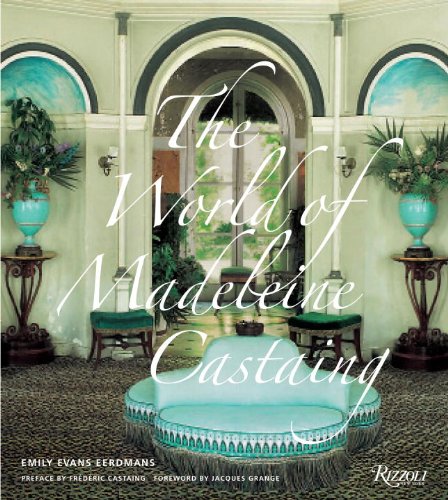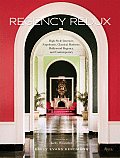
The adage that good things come in small packages is never more true than in the case of the Thorne Rooms at the Art Institute of Chicago.
These miniature miracles are named after their creator, Mrs. James Ward Thorne (née Narcissa Niblack), who between the 1920s and 60s assembled over one hundred exquisitely crafted and intricate rooms (of which 68 are on view at the Institute) that tell "a" story of interior design from 1600 through the 1940s. ("A" story because the period styles chosen for the rooms were selected by Mrs. Thorne and reflect the historicist tastes of her moment.)
Inspired by the newly installed period rooms in museums such as the Metropolitan Museum of Art and Wintherthur, the Thorne rooms were happily unhampered by the space requirements of full-scale replications, hence allowing more to be on display and a fuller picture of design history to be told.
Here are but a few I found particularly interesting:
Thorne gave this Neoclassical moderne room an Asian flair to conjure the last word on design as seen at the 1937 Paris Exposition Universelle.
Note the sculpture seen through the open doorway, also seen below....
And available today....
 for a price from Quatrain. (Many thanks to Bart Swindall for making this connection!)
for a price from Quatrain. (Many thanks to Bart Swindall for making this connection!)McMillen, as you may know already from the Peak of Chic's post here last week, did their own collection of miniature rooms during the Depression to drum up interest. They toured the country to great acclaim.
 Another modern interior Mrs. Thorne created was this "English Drawing Room of the Modern Period, 1930s" inspired by Syrie Maugham's famous All-White Living Room as seen below. Even the Constance Spry-esque flowers are included!
Another modern interior Mrs. Thorne created was this "English Drawing Room of the Modern Period, 1930s" inspired by Syrie Maugham's famous All-White Living Room as seen below. Even the Constance Spry-esque flowers are included!
This stunning "French Bathroom and Boudoir of the revolutionary period, 1793-1804" was based on... this design for Mlle Dervieux's Directoire bathroom, Paris, 1789
this design for Mlle Dervieux's Directoire bathroom, Paris, 1789
designed by the architect Belanger. This is one of the only documented designs of a Directoire interior which I included in Regency Redux, BUT I never noticed the recessed bath in the floor until I saw the Thorne room.
According to Peter Thornton's Authentic Decor, Dervieux was a dancer who loved to entertain in these rooms. Ahem. Apparently le tout Paris was scandalized by her relationship with her architect, until he married her.
Click here to view the entire Thorne collection.
Top photo of a Regency entrance hall based on the Stone Hall designed by Sir John Soane at Lewisham - sadly I couldn't find any photos of the original.
All Thorne room photos by Kathleen Culbert-Aguilar and Michael Abramson for the Art Institute of Chicago.









4 comments:
I have to agree with you as I did with Peak Of Chic they are incredible- sort of mesmerizing. And for any one interested in architecture or the decorative arts they are an unparalleled method of seeing the various periods and styles of a couple of centuries of design. I grew up with a step son of a Thorne and the family had a few Mrs. Thornes miniatures in their house. Now that I look back, I realize that I was so young that I didn't ask any questions but was completely fascinated and focussed on these few rooms when ever I visited the house. I later went to the school at the Art Institute and by then I could visit them every day, and I did. What I' ve always wanted to know is - Who came up with the entire scheme of the " Syrie Maugham" style of room and what real room if any was it based on?
Well, as I have the benefit of the Institute catalogue (which everyone should own), this is what they have to say about the room. It seems to have been inspired by various London drawing rooms Narcissa visited. She noted the "vogue of the hour is Rococo wall treatment with modernized traditional furniture and, here and there, rare antique pieces." And apparently this fictional house is located next to Regent's Park as it is the lights of Clarence Terrace across the park which illuminate the windows. EEE
I guess all Mrs. Thorne needed was just a little popular inspiration, a chat with her architect and a make believe address to create magic. She was clearly a woman of extraordinary taste and vision- I am very impressed!
I don't have my older editions of the Thorne book at hand, so I can't check to see if there's any additional information about Mrs. Thorne's sources for that Regency hall/ library at the top, but I can't find anything about the Soane reference online. Normally, that doesn't mean anything, because the Internet's nowhere as useful as a good design library & there's a ton of stuff in books that's not yet online. So maybe that's the reason I can't find anything.
Then again, maybe not, because while it's a really handsome room, the rotunda's details seem to me to be a little too finicky, too archaeologically correct to be based on an actual Soane design. Even when Soane uses Greek or Roman motifs, he uses them in unusual ways, and that, combined with his expressionistic use of space, make his designs seem very modern, while this one feels anything but. So I'm not so sure of that Soane connection.
But here's the thing: I'd swear that within the last few months, I've seen a photo of a room that may have been the inspiration for this model, because I remember being struck by the similarity at the time. There was no Adamesque library cobbled onto it, but other than that, they were much alike & I intended to further compare the two when I had time. Then, of course, I promptly forgot all about it, and now I can't remember where I saw the photo it in the first place, or where the original room is (or was) located. All I know is I'd never seen the image before, so it must be in something that's fairly new. Maybe one of the books from the Country Life archives, or something conected with the Thomas Hope show from last year.
At any rate, whatever the sources of this particular room, it's one of my favorites. In fact, in this one post, you've shown 4 of my favorite 6 rooms. The only ones left are San Francisco & the Biedermeier room.
Post a Comment